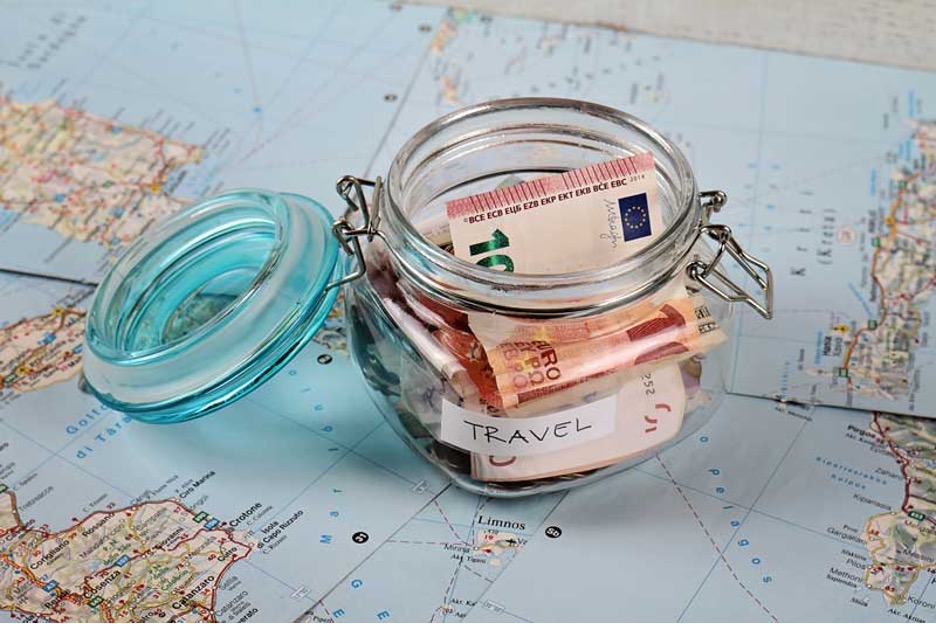Check out these suggestions for traveling through Europe on a budget.

Europe can be a pricey vacation destination. If you’re determined to cross the pond, here are some tips on making your dollar go farther.
Start With Cheap European Destinations
Where you go will have the biggest impact on your budget. The cheapest places to travel in Europe can be a great value, some on par with bargain spots in Latin America and Southeast Asia. At the opposite end of the scale, though, you can easily spend triple what you would in the USA.
No matter where you stay and how frugally you watch your funds, a week in Bosnia, Bulgaria, or Hungary is going to cost a fraction of what a week in Norway would. The Czech Republic and Slovakia can feel like ye olde Europe, although at half the price. On the other hand, a week in Stockholm can be on par with a similar stay in New York City. (The airport in Geneva is plastered with ads for $100K watches and concierge banking services for a reason, though skiing in Switzerland is much more affordable than you may expect.) The former Soviet countries and the Balkan countries are the cheapest in general, but Portugal and Spain are still good values in southern Europe, and some areas of Greece won’t break the bank either.
Slow Down and Stay a While
Transportation costs can be pricey in Europe, whether you’re flying with luggage, traveling on a rail pass, or hopping buses. In Western Europe, fuel costs, taxes, and labor costs are high. Exploring one area on a short trip or one country/region over several weeks costs less, plus it may allow you to absorb more. Slow down to both save and savor.
Get Out of the European Capitals (and Venice)
Cities cost more than rural areas. Popular capital cities cost more than midsize ones. With very few exceptions, the cheapest cities in Europe are never the biggest or the ones where the government is based. Sure, spend some time in Paris and London—catch a few museums, see the sights. Then head out. Don’t spend your whole vacation or backpacking trip in capital cities unless you’re willing to spend like the rich tourists in a big hurry do. In this time of overtourism, look for the less-visited second, third, and fourth places to travel to beyond the capital city or the big selfie stick destination. Sure, the most popular European destinations are usually popular for a reason (or at least famous for being famous), but don’t spend your whole vacation jammed in with the crowds and paying top dollar for a place to stay. Get away from the hordes and spend less.
Make the Most of Free Attractions in Europe
Finding the cheapest way to travel Europe means being judicious about big-ticket admission charges. When a museum or famous site charges $25 per person, it can have a big impact on a couple’s daily budget. So choose to splurge on what really matters to you! Check out if the museum you are interested in has free days/admission times. Consult a city’s official tourism site for free event and museum listings, along with destination-focused blogs for freebies and bargains. Sometimes you can save by getting a city pass like this GoCity London one that includes 93 attractions and experiences.
Get a Local Transportation Pass in Europe
In most European cities, you can buy a pass for one or more days for unlimited rides on public transportation. Get one and pack all your city travel into that time. A travel pass can also open up your lodging options too—you can stay on the branch of a subway or bus line instead of paying a premium to be right in the center of the tourist zone. Sometimes full-on city passes include transportation as well. Or you can just buy a pass at the metro station. Bonus: Often the public transportation system will get you to where you’re going faster than a taxi.
In general, multi-country rail passes aren’t a great value unless you’re going to be on the move every day or two. Do some digging and compare prices.
Look Deeper for Europe Hotel Deals
In most of Europe outside Scandinavia and Switzerland, two or three people traveling together can stay in a decent hotel for less than you would spend in a hostel. Unless you’re just looking for partying mates to blow more money with, independent small hotels and value chains like Ibis and NH Hotels can give you more comfort at a good price.
Go beyond the USA-based booking platforms, as there will be more inventory on local websites. Use a metasearch engine like Kayak, Booking.com, and TripAdvisor (beyond the first page), a good guidebook, or an authoritative online local resource. Google Maps will show lots of hotels you won’t see listed on the likes of Expedia.
Hostels in Europe are a good option if you’re traveling solo, especially if you’re in a hurry. Start with Hostelworld but don’t forget to comparison shop. Sometimes you’ll see different choices and/or better deals on Booking.com if you sort for solo options. Or maybe the best hotel is no hotel at all. There are some apartment rental deals all over Europe; check out Airbnb or Vrbo.
Live Like a European Local
If you rent an apartment or home for a couple of weeks in one place, you can live like a local instead of a tourist and spend much less in the process. When you’re in a real neighborhood instead of a tourist one, you pay what the locals do for groceries, pubs, coffee shops, and restaurants. You’ll also have a chance to experience more of the local culture. You can also sign up to be a housesitter, do a home exchange, or rent an apartment a subway ride away from where all the tour buses are parked.
Get on a Bike in Europe
You can take a real tour with a company like BikeTours.com and spend the same or less as you would on a vacation you booked yourself while seeing more of the countryside. (Note: The tour company picks up your bag every morning and transports it to the next hotel; it’ll be waiting by the time you arrive.) Or you can just hop on a bike to explore a city, either on a local tour or your own. Many cities have public bike share systems, while some hotels rent out bikes to guests for free or cheap. And you can often find a bike shop that will rent you wheels for a whole week at a big discount.
Splurge for Lunch, Not Dinner
If you’re going to go out for a nice meal now and then, you’re better off doing it during the daytime. Sure, it’s not quite as romantic as dining by candlelight, but many restaurants offer a prix fixe option, a set meal, or a “meal of the day” that makes even the gourmet hotspots less of a strain on the wallet. Also, don’t eat where you see all the tourists eating, especially in a popular destination like Venice or Amsterdam. Those places are priced for, well, tourists.
Party Where It’s Cheap, Not Where It’s Not
It makes sense to drink up if you’re in the Czech Republic, Bulgaria, Romania, or Hungary. Or in an Italian village where they sell wine by the jug. Not when you’re in Oslo and alcohol is taxed more than cigarettes.
Don’t Go to Europe in the Summer
Consider not going to Europe in the summer. Flights to Europe are at their most expensive then, hotel rates are the highest, and the famous places are hot and packed. I know many decide to take a trip across the ocean then because school is out, which is hard to get around if you’re a family. But at least take off the day after school ends in early June, rather than during expensive August when three-quarters of Europeans are also on vacation.
Otherwise, if you don’t have offspring and you’re not a teacher, rethink your timing. If you don’t have to take your trip to Europe between June and August, then don’t. Your European vacation will be more pleasant and far less expensive if you visit in spring or autumn instead.
Cheap European Vacations and Flights
Use Skyscanner or Google Flights to check prices from your home airport on their big maps. Often, going to a neighboring country instead of the one you had planned to land in can save you hundreds of dollars (and there are usually bargain flights or trains within Europe to get you to your final destination). Also, don’t rule out an organized Europe tour. Check out the itineraries and prices on Intrepid or G Adventures and you might be pleasantly surprised at how reasonable they are, especially for longer trips to multiple countries. A tour can also drastically cut down the time you spend on planning logistics and searching for where to stay.
Twist’s Take: There’s no one cheapest way to travel Europe, but using at least some of the strategies above can help put together a great Europe trip that won’t cost a fortune.
budget.
